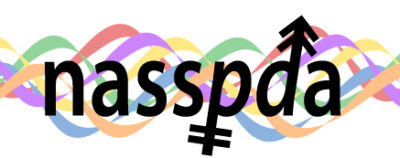Syllabi vs. Grading
Original posting February 2017 NASSPDA Newsletter
Posted: January 6, 2022
By: Benjamin Soencksen
Our world of partner dancing has many topics that are considered controversial or hot button issues, such as gender identification, pros and cons of equality dancing (changing lead and follow within one dance), the choice of costumes, etc. Discussions of these topics are influenced not only by questions of what constitutes better dancing, but also by social changes and changing perceptions or what is today deemed politically correct.
But we also pick up and continue discussions that stem from the mainstream and competitive world of partner dancing, some of which are as old as the early days of competitive dancing, which can be set as early as the start of the 20th century. One of these topics is the development, usefulness and application of a syllabus.
A syllabus sets the basic language of a dance by establishing characteristic step patterns, technical execution and rhythmical interpretation, which to our understanding defines each dance. This understanding is typically based on the observations of several years of development of the dance, preceded by the musical evolution that triggered the invention of the dance. There are different types of syllabi for the various dances we still dance today, some are more and others are less restrictive in their interpretation of the basic language and some vary greatly in style, such as the same dances that are described within the International, American, Country Western or other styles of dancing. Typically, these variations are more about the addition of step patterns further interpreting the very basic pattern, the technical execution and the rhythmical application. The diversity, created over decades enjoying these dances and their various style interpretations, has also triggered calls for consistent standards when we are competing to be the best in that dance or style. Style categories have been created, organizations have formed around one style, syllabi have been established to firm up that style, establishing parameters excluding other styles and subsequently creating a standard for that style and dance.
The structure of these syllabi further changed when they were used to influence the development of a dancer by subdividing a syllabi into levels of achievement. It is widespread believed that a dancer garners better dancing skills, if initially restricted by levels of patterns that are deemed simpler in the beginning stages of the learning process and then get more complicated as we grow into higher levels of accomplishment. That is at least the theory. In reality, many people are drawn to partner dancing by examples of high level dancing, which they want to experience with the very first steps they learn. That typically leads to a learning curve less desirable, but mostly unavoidable. One rushes through the preliminaries of learning a dance to get to the more complicated, intricate patterns that tempted us in the first place, at which point we are made to realize that our skill set isn’t adequate to the challenge and that we need to get back to the basics. That is the moment when a dancer starts to become truly a dancer.
In order to promote learning by application of a syllabus and therefore from the start the development of better dancers, the mainstream world has applied syllabus restrictions on the lower levels of competitions and established a system of points and/or amounts of placements that would elevate one to the next higher level.
During the very first same-sex dance events, no such or any other system was applied to separate couples into specific levels of experience, but rather couples made their own choices. It was quickly realized that in all fairness some system would be needed, but that, especially with international events and when encouraging dancers of all levels to participate, such as the Eurogames or the Gay Games, a syllabi restriction to define the various levels won’t quite work and would be too restrictive. Instead, as has been done now for almost two decades, our community has taken to the grading system developed by the Europeans, through which at each event every participating couple is newly classified in comparison to all other couples before the actual competition takes place. This practice has found even in mainstream many admirers, since it establishes anew each time a fairer playing field. It has also allowed a couple to organically grow into higher levels of the competition circuit through improving their skill set(s) and not by collecting points and/or placements, which could easily be an arbitrary result depending on who one was competing against at the time.
Whether learning by syllabus and being restricted when competing in one’s first stages develops better dancers is in my opinion quite debatable. I personally have experienced competing in both, a system that didn’t have any syllabus restrictions, which then was changed to that restriction, and I have witnessed no betterment in the learning curve or level of competition. This means to me that even though I recognize that a syllabus can be a very helpful learning tool, it isn’t the only answer to a better level of dancing.
